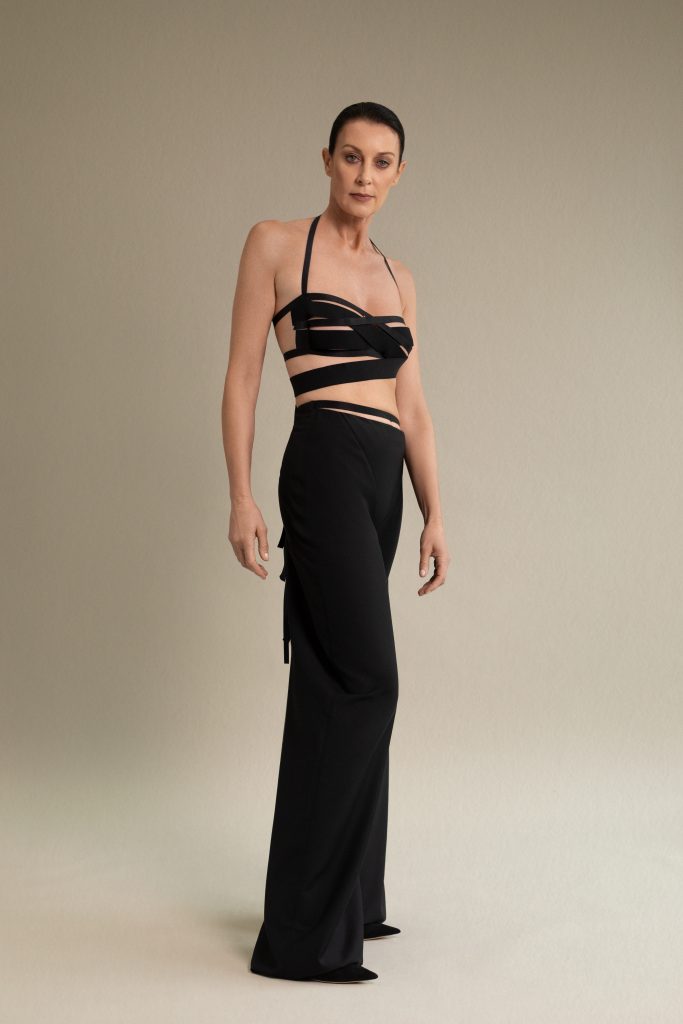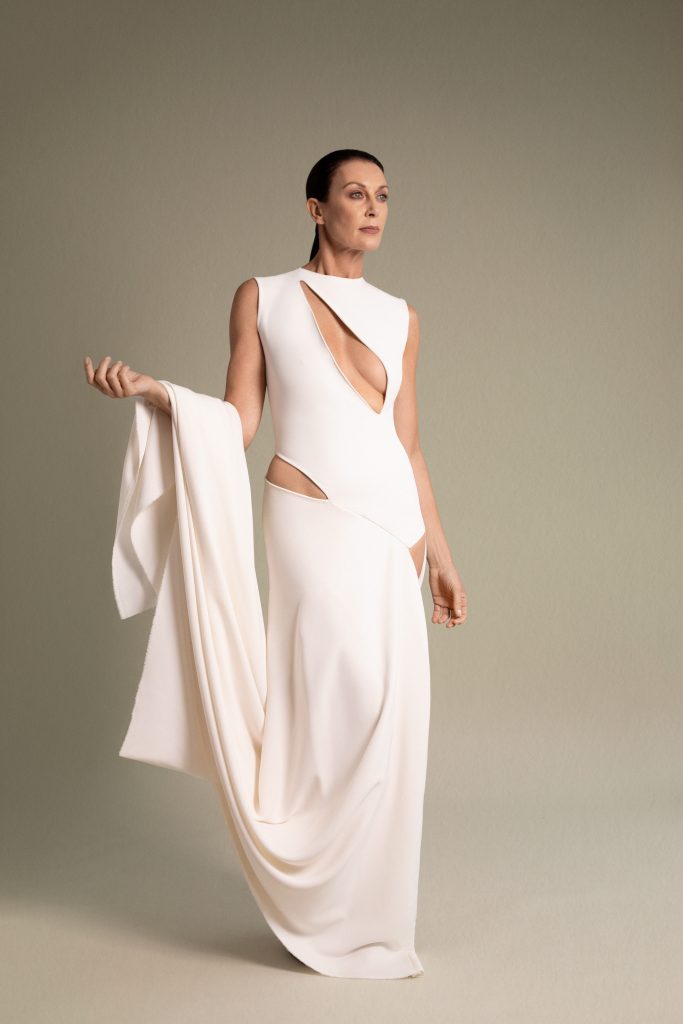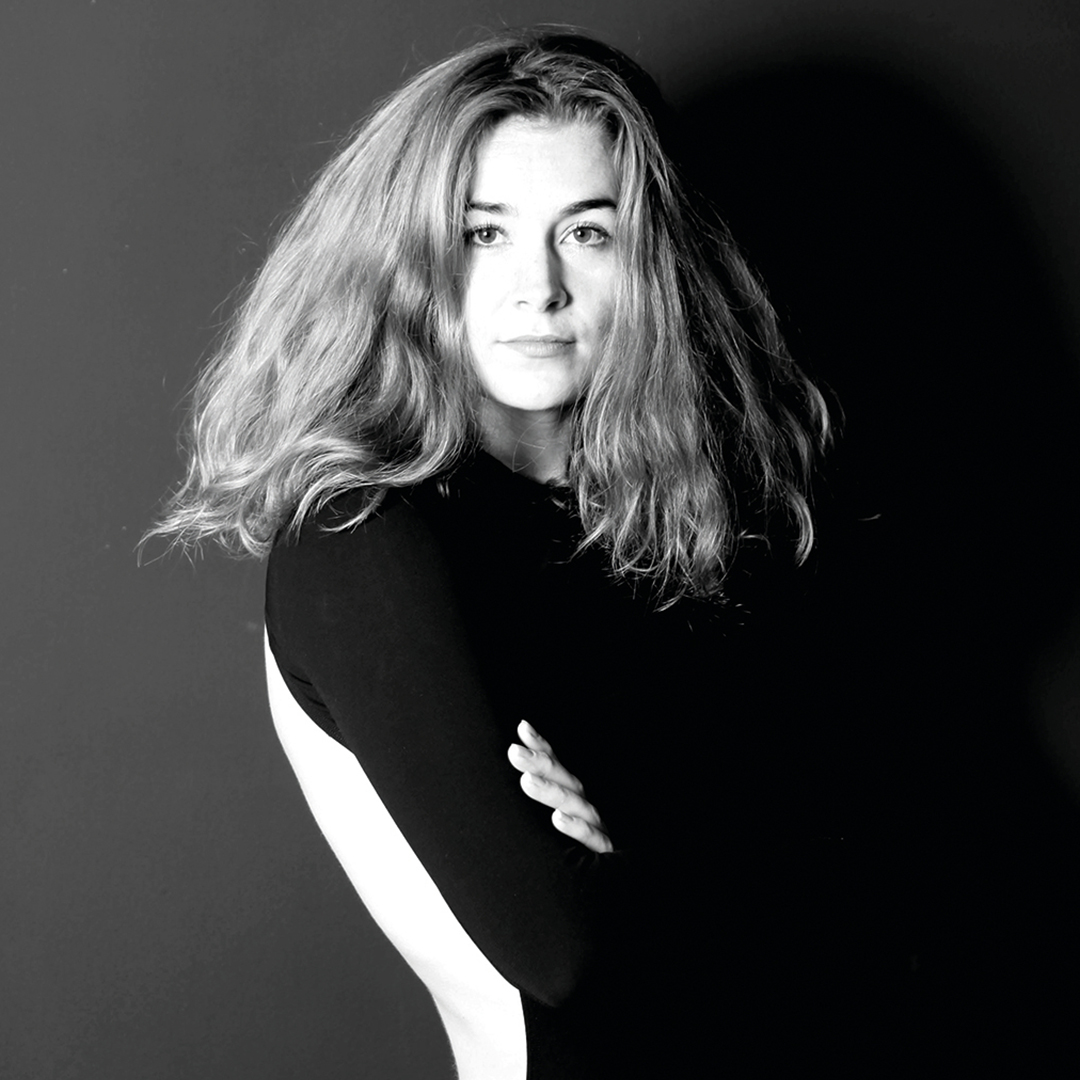Certain people, brands, or other life cases seem to have emerged OUT OF THE BLUE. When taking a closer look, there’s a long journey that lets them walk the path leading to where they are now. Let’s dive into the story of MAX ZARA STERCK.
Cover photo: © Marja Sterck
In conversation with Max Zara Sterck
As a former professional gymnast, the body’s movement heavily inspired her designs. After graduating in 2015 in Fashion Design from Artez University in Arnhem, Netherlands, she gained international experience at brands such as J.W. Anderson, La Perla, and Alexander McQueen. At La Perla, she learned how to work with the body and got free play for a ready-to-wear collection, fueling her love for fashion design and perfectly matching her graduation collection.
“I work in a sculptural way; it can be very complex. At La Perla, it was great to focus on shape and structure. They gave me plenty of time to develop a collection. It was necessary because it can take weeks to develop a bra. Soon after, the creative director wanted to start a sustainable brand in London. I helped him with the preceding research. I guided the choices he would make and material development,” Max Zara Sterck starts the conversation. Since gaining momentum at fashion houses like La Perla, J.W. Anderson, and Alexander McQueen, Max Zara Sterck has been on a roll, and her eagerness to learn works contagiously.
Eager to learn
“There’s a huge gap between sustainable material development and using it. For example, we used pineapple ‘leather’ but noticed it would break easily when put into a mold. Durability has been an important factor when developing new things – and it still is in my work,” Max Zara Sterck explains. This has been important since the start of her eponymous brand, as has buying leftover fabrics from big fashion labels. But that’s not the only experience she gained at her previous internships and jobs; her curious mindset and cheeky attitude brought her to places others wouldn’t get to. “At J.W. Anderson, I focused on pattern cutting. I had to create the weirdest shapes out of fabric and make them work. I started there as an intern. I was pushing myself into the pattern-cutting part since there was someone in charge I thought I could learn a lot from. I had no clue about the hierarchy. I was like: ‘Hey, I’m here to learn! Please give me a chance.’ And because of my optimism and drive, I could stay as an actual pattern cutter after my internship. You have to push yourself sometimes to make your dreams happen.”
“At La Perla, I learned about comfort, which I translate into my label now. I have to make the constructions comfortable. At Alexander McQueen, I worked on special projects, like exhibitions that focused on storytelling. Afterward, I taught design philosophy and sustainability in Rome – so yeah, I’ve done much to become the designer I am today.”
Need for freedom
These experiences heavily shaped her as a designer, but she felt there was more. “The experiences were great; they taught me how big fashion organizations work. But even though I was a designer with lots of freedom, I noticed that I had an opinion about everything I saw. I needed more. The thing I struggled with most was that my job wasn’t about the product anymore; it was about the celebrities wearing it, about the sales, while losing sight of the final product. It pushed me to start my brand; I already created some items and got great feedback from friends. I noticed that their posture would change, adding to their confidence. It felt like a shift in their attitude – and that’s still amazing to witness.”
She soon realized she was ready to focus on her brand. “I wanted to have the freedom of creation. I also missed my love for fashion; my garments are my babies. I have a personal relationship with my clients and stylists. It adds value to life.”


Adding a sense of confidence
It led to a label focusing on body awareness by adding confidence. “When people see my designs for the first time, they hesitate to wear them. But once they try them on, they fall in love. The garment supports some self-awareness and self-consciousness.” In this way, her designs serve a higher purpose. “I think the garments enable the wearer to embody their full potential. It’s all about expressing your best self. When you’re comfortable on your own body and with your own body, you’re more able to express yourself in life.”
Going with the flow
The design process is as fluid as the garments look. “I don’t work with a team or with trends. Usually, I start with a fabric I developed or some deadstock materials. It’s important how it fits; the draping is pivotal. Mostly, I work with dancers who walk through the studio with the fabrics around them. I observe them walking and moving around while sketching. The motion of the fabric and the body is central to my creations; the natural connection is pivotal.” To go with the flow is something that comes naturally in everything she does. “What I missed when working for other brands was that I couldn’t go with the flow. I love the feeling when things fall into place while not being planned. I get creative when I enjoy what’s in front of me. I just let things happen. Afterward, I create a prototype, hand it to the dancers, and ask them for feedback. In that way, my designs come to life.”
A natural sense of timelessness is central to Max Zara Sterck’s designs. “For me, that part is about not following trends and the high quality of the fabrics. Everything should be durable; hopefully, my designs will be passed on to the next generation. I still wear my grandmother’s garments, and I hope people will do the same with my items.”
Sleeping with Jacques’ founder on allowing women to dictate their dress code










